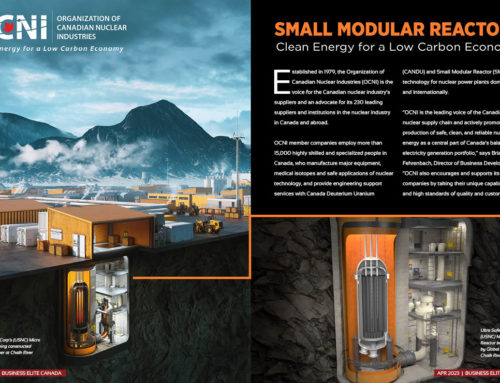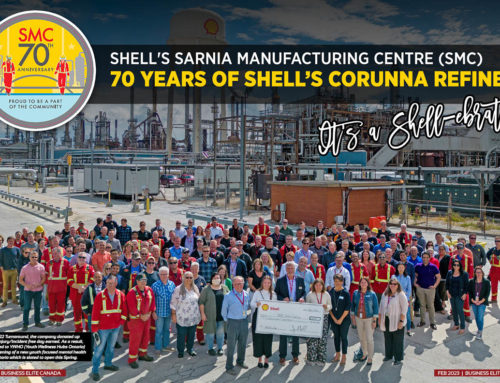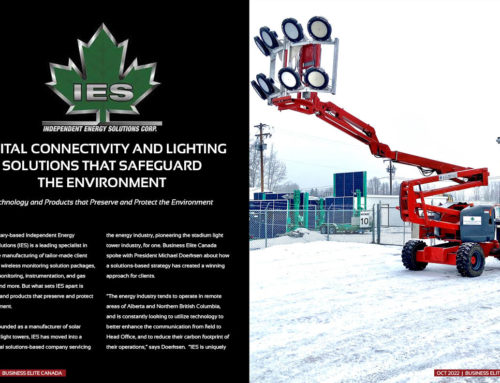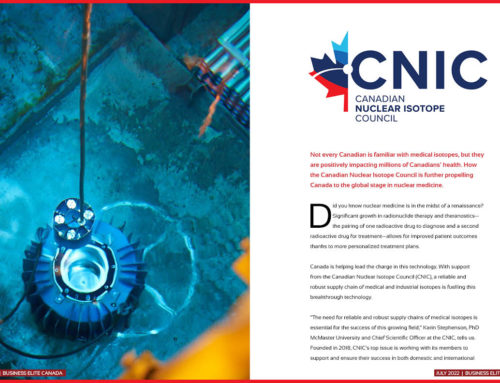Helping the Regional Municipality of Wood Buffalo (RMWB) become a Carbon-Neutral Municipality
By Cheryl Long
A landfill site is often considered a necessary evil, particularly to residents who live within breathing distance of the odour-emitting facility. Now imagine an alternative that gives off little to no odours, emits no greenhouse gases into the environment, prevents groundwater contamination and can transform a landfill into reusable resource within a short period of time. It’s an alternative that’s poised to change the way the world deals with waste disposal.
Sustainable Aerobic Landfill Technologies (SALT) Inc. is based in London, Ontario and uses what seems like simple technology to tackle a worldwide problem – growing populations that produce more waste than the globe will eventually be able to handle. Traditional landfills are anaerobic, or oxygen-deprived, and pose environmental risks through greenhouse gas emissions, odour production and leachate – a resulting landfill liquid that can contaminate groundwater. The mountainous sites can take centuries to decompose their organic materials. SALT uses compressed air and moisture to remediate and recover landfill space by transforming the site from an anaerobic to aerobic state, creating a healthy environment where bacteria rapidly break down the waste organics.
“Aerobic bacteria produce zero methane and degrade organic material 30 to 35 times faster than under anaerobic conditions,” said SALT President and CEO John Baxter. “That means a landfill site that would normally take over 100 years to fully degrade, can be done in three to four. There are significant advantages.”
SALT began developing their landfill technology about 15 years ago, motivated by the realization that current municipal waste disposal methods were ineffective and harmful to the environment. Canada is home to the company’s first full-scale endeavour. In 2008, the Regional Municipality of Wood Buffalo selected SALT Inc.’s aerobic bioreactor technology as the long-term landfill gas management plan for the Fort McMurray Landfill. The Regional Municipality of Wood Buffalo was seeking a viable technology to significantly reduce the environmental footprint of that facility while reducing the quantity of methane emitted annually. SALT Inc.’s technology will help achieve the goal of the municipality and will assist with establishing the Regional Municipality of Wood Buffalo as a national and global leader in carbon reduction action.
“In the case of Fort McMurray, we are going to reduce carbon emissions by 1.2 to 1.8 million tonnes” Baxter explained. “That by itself will be the largest single carbon reduction project on a landfill in the world.” Climate Change Emissions Management Corporation of Alberta (CCEMC) has recognised the importance of this technology and has made a significant investment in the project.
The company’s process, which can be used for both active and closed landfills, involves drilling wells to various depths in the site and then injecting air and moisture into the wells. The change in environment quickly kills the anaerobic bacteria, which are replaced by aerobic bacteria that begin to rapidly decompose the organic material. Methane production and odours from anaerobic decomposition ceases within two to three weeks and the quality of the leachate improves. Heat generated by the process turns the leachate into water vapour. SALT condenses the water vapour and then either releases it into the environment in the form of non-polluting water or adds it back into the site when additional moisture is required.
After three to four years, the site becomes inert and as a result of compaction, up to 30 percent of the original airspace is recaptured. The site can then be excavated using mature open pit mining techniques where composted materials are removed and products such as plastic, rubber and glass can be recovered. Hazardous materials such as batteries, propane cylinders and chemical drums are disposed of safely.
“Costs and liability issues are mitigated after the first phase,” Baxter said. “We then add companion technologies.” These technologies, developed by SALT with assistance from the National Research Council of Canada, can transform the site’s non-organic materials into durable products. Co-mingled plastics, glass, rubber and carpet can be manufactured into items such as utility poles, railway ties, marine wharves and landscaping products that are cost-effective, non-toxic and resistant to erosion. At the end of the process, municipalities have not only reduced expenses associated with landfill operation but can also recover costs.
“Space in a landfill is extremely valuable,” Baxter explained. “We can recover that space and turn it back into a performing municipal asset that produces revenue for the community.”
Alberta Environment requires major carbon emitters to reduce their footprint by 15%. However, the Regional Municipality of Wood Buffalo project is a voluntary and self-promoted initiative to reduce the environmental impact of its regional operations and not subject to the above requirements. The Regional Municipality of Wood Buffalo made this investment to reduce its carbon footprint, reduce the environmental impacts of its closed landfill and to showcase “best practice” in waste management methane reduction. The goal was to establish the region as a global leader in environmental stewardship and these principles are further supported within the region’s sustainable development plans. Carbon neutrality was also a significant factor in the decision. As well, the size of the landfill, age of the waste and newly established Alberta Carbon offset program, made this project an ideal fit for the first large scale application of this technology.
“The Aerobic Bioreactor project is a significant milestone for the region and will vastly reduce the annual carbon emissions of the Municipality” Says Jarrod Peckford, Supervisor of Environmental and Public Services with the Regional Municipality of Wood Buffalo. “Not only will the project reduce the methane generation within our region, but it will showcase a technology that can be utilized globally to reduce the greenhouse gases emitted from landfill operations. Annually landfill operations contribute 4-5% of the global carbon emissions which could be reduced through the aerobic bioreactor process.
There is a wealth of talent and knowledge supporting SALT’s technology. The company is working closely on the Fort McMurray project with a team of three tenured engineering professors, two post-doctorate fellows and three graduate students from Western University in London, Ontario. The group is studying the site’s aerobic reactions, leachate conditions and also conducting emissions analysis. Another associate, Dr. Irena Creed, of Western’s Biology Department is Canada Research Chair in Watershed Sciences and a director of the Africa Institute. Dr. Creed believes that the aerobic technology is the key to preserving groundwater particularly in areas where it is the only source of water and can be easily polluted by landfill runoff.
SALT is also working with Conestoga Rovers & Associates, the largest environmental engineering firm in Canada. Located in Waterloo, Ontario, the firm is responsible for a significant number of landfills in Canada as well as sites in the U.S., Mexico and South America, Baxter said. One of their engineers, Dr. Tej Gidda, is an expert in anaerobic and aerobic reactions and is very interested in SALT’s technologies. He said that the SALT approach is “the single greatest modification and change to the landfill business that has occurred in the last 100 years,” Baxter recalled. Dr. Gidda visited the Fort McMurray site, and said that “there is absolutely nothing like this in the entire world” and that the process has “the opportunity of changing the environmental, financial and social consequences of most organizations in countries around the world,” Baxter said.
Upon completion of this project the Regional Municipality of Wood Buffalo will deploy the technology within the Regional landfill as phase 2 to degrade the waste in that facility after it has been filled and closed in 2018. SALT intends to build its’ client base in other regions. “We believe our growth will be very rapid and that our services will be in great demand both domestically and internationally.”







